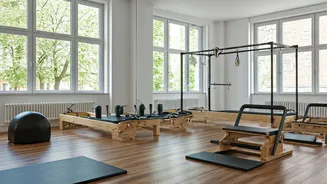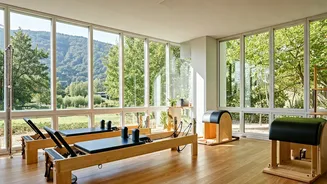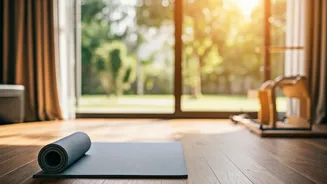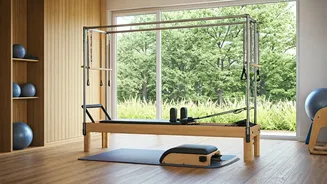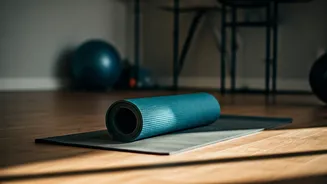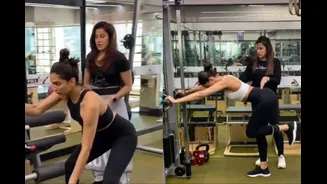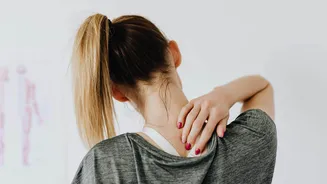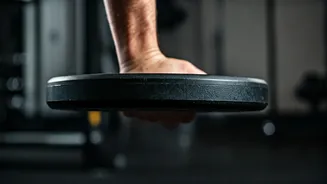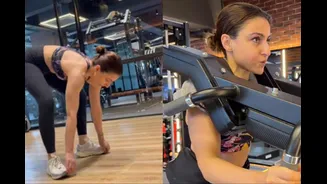Strength Without Strain
One of Pilates's primary advantages is its ability to build strength without putting excessive strain on the body. Unlike some gym routines that can involve
heavy weights and high-impact exercises, Pilates emphasizes controlled movements and proper form. This approach targets specific muscle groups while promoting stability and balance. This targeted strengthening is particularly beneficial for those looking to improve functional fitness and reduce the risk of injury. By engaging core muscles, Pilates enhances overall strength in a safe and effective way. The exercises focus on building lean muscle mass rather than bulk, providing a toned physique without the added strain on joints that is often associated with other forms of exercise.
Flexibility Enhancement
Pilates is exceptional at improving flexibility without overstretching. The exercises incorporate dynamic movements that lengthen muscles and increase range of motion. Unlike static stretching, which focuses on holding poses, Pilates involves flowing sequences that encourage movement through a full range of motion. This approach promotes greater flexibility and prevents injury. This also addresses imbalances and improves overall body mechanics. Through consistent practice, individuals experience increased flexibility, reducing stiffness and enhancing mobility. The emphasis on controlled movements ensures that the body is stretched gradually and safely, preventing any damage to the muscles or joints. This improved flexibility also supports better posture and reduces the risk of back pain and other musculoskeletal issues.
Posture Correction, Core
Pilates is highly effective at correcting posture from the core outward. The exercises emphasize engaging the core muscles, which are the foundation of good posture. By strengthening the core, Pilates helps to stabilize the spine and pelvis, reducing the tendency to slouch or develop poor postural habits. The focus on alignment and precise movements promotes awareness of body position. This can include exercises that help to create better awareness of how the body moves in space. The exercises work to realign the body, improve balance, and reduce strain on the spine. Regular Pilates practice can lead to a more upright and balanced posture, contributing to improved appearance and reduced back pain. This will also help to increase confidence.
Mind-Body Connection
Pilates uniquely activates the mind-body connection, offering benefits beyond physical fitness. The exercises require focus, concentration, and mindful movement. This helps to develop a deeper awareness of the body and its movements. During Pilates, individuals learn to coordinate breath with movement, promoting relaxation and stress reduction. This mind-body connection enhances body awareness and reduces the likelihood of injury. The practice of Pilates encourages individuals to listen to their bodies and respond accordingly, leading to improved mental clarity. This holistic approach makes Pilates a powerful tool for overall well-being. By integrating the mind and body, Pilates provides a comprehensive fitness experience that enhances physical health and promotes mental wellness, helping to make the overall body feel better.
Pilates vs. Others
Pilates is different compared to gym workouts and walking, providing a more balanced approach to fitness. While gym workouts often focus on weight training, Pilates emphasizes core strength, flexibility, and proper alignment. Unlike walking, which offers primarily cardiovascular benefits, Pilates targets multiple muscle groups and improves overall body mechanics. The controlled movements and mindful practice of Pilates distinguish it from other forms of exercise. The comprehensive nature of Pilates makes it a more effective option for those seeking holistic fitness, body and mind, that helps to achieve long-term benefits and reduce the risk of injury. Moreover, the low-impact nature of Pilates makes it accessible to people of all ages and fitness levels. This contrasts with gym workouts, which can be strenuous and walking, which may not offer the same level of core engagement or flexibility enhancement.
